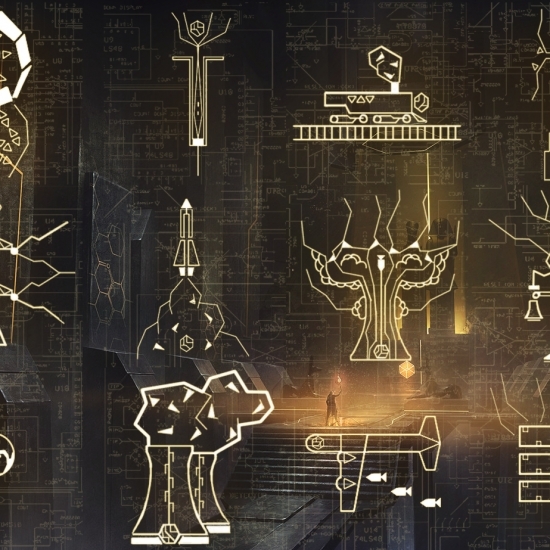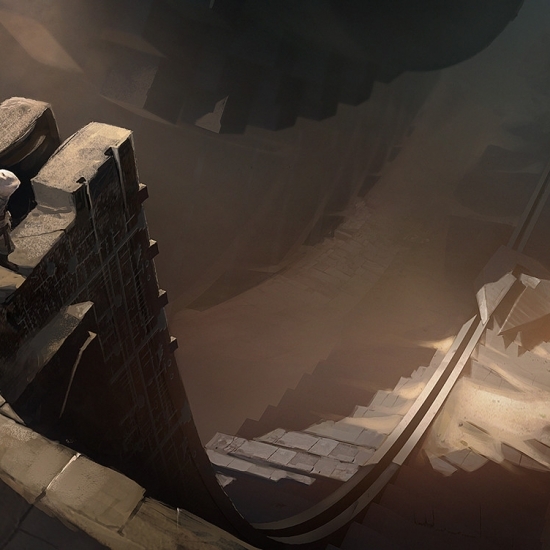SUMMARY
Centuries before the establishment of the Hidden Ones, a proto-Assassin order founded by Bayek of Siwa, Artabanus, who is more commonly known as Darius, fiercely fought for the freedom of Persia from tyranny. He was the first recorded wielder of the Hidden Blade which he utilized to assassinate Xerxes I, which went on to become the iconic weapon of the Assassin Brotherhood across millennia.
The story of Darius was initially mentioned throughout the Desmond saga and later told in detail throughout story arc one “Legacy of the First Blade” of post launch content for Assassin’s Creed Odyssey. So far, two out of three episodes are released from Legacy of the First Blade with the third episode “Bloodlines” is set for release in March. Therefore, this page will be further updated as new content is released.
LIFE UNDER XERXES
The Order of the Ancients aided the sovereignty and conquests of the Achaemenid kings Darius I and his son, Xerxes I throughout the 5th century BCE. Artabanus and his companions, Pactyas and Amorges, stood in opposition to the Persian kings and their tyranny, assassinating King Xerxes I in August of 465 BCE, as Artabanus struck the killing blow utilizing the Hidden Blade marking its first usage in recorded history.
Worring that he would be subjugated and manipulated by the Order’s influence, Daris plotted the assassination of Artaxerxes I after he ascended to the throne, as a preemptive measure. However, Amorges, stood against his plans, decideding to join the Order of the Ancients to prevent Artabanus from accomplishing his quest for blood. Eventually Amorges encountered Artabanus who called for the guards. As a result, Artabanus was branded a traitor. Worrying for the safety of his family, he fled Persia with them, as the Order of the Ancients fiercely pursued them, leading him to adopt the name Darius
Artabanus, now known as Darius, came across another opportunity to assassinate Artaxerxes I, as he was hired by the king’s brother, Hystaspes, to assassinate the Artaxerexes I. Darius utilized poison to assassinate his target though it only led to the man to lose his sight rendering the assassination attempt unsuccessful. Artaxerxes spread the lie that Darius had succeeded, in order to safely escape Persia.
ENCOUNTERING THE EAGLE BEARER
Throughout his life, Darius fathered several children, including a son named Natakas and a daughter called Neema. Darius and his son Natakas were hiding in Makedonia circa 422 BCE, where they encountered The Eagle Bearer, Kassandra who was inadvertently drawn into conflict with members of the Order of the Ancients.
Darius, Natakas, and Kassandra joined forces to eliminate the existing members Order who were dedicated to eliminating those they referred to as “The Tainted Ones” in Makedonia. They were successful in their quest and Pactyas was killed as a result. In the aftermath, Darius and his son decided to abandon Makedonia, seeking refuge in Achaia afterwards, setting out to travel further east from the port of Patrai. A naval fleet led by the Tempest soon blockaded the port city soon after their arrival, altering their plans to leave Greece. Darius sent a letter to Kassandra, seeking her help once again, fearing that the Order of the Ancients could be involved again.
Kassandra was able to defeat the Tempest, with the aid of Darius and Natakas, and seemingly end the presence of the Order of the Ancients in Achaia. In the aftermath, Darius decided to settle with his son, Natakas, who developed a relationship with Kassandra, fathering a child named Elpidios, the first known grandson to Darius. Unbeknownst to them, Amorges and his spy managed to find their location and observe them from a distance anticipating an opportunity as they let down their guard to launch a full attack on Darius, Natakas, Kassandra and the newborn Elpidios.
LEGACY
Somehow by the year 48 BCE, Queen Cleopatra of Egypt laid her hands on Darius’ Hidden Blade, passing it on to her protector Aya, who eventually crafted one of her own and gave the First Blade to her husband Bayek of Siwa as her sought to eliminate members of the Order of the Ancients in Egypt. Upon the foundation of the Hidden Ones, the Hidden Blade became the signature weapon of their order, and remaining in usage as their primary weapon centuries later when the order was reformed as the Assassin Brotherhood and onwards.
It remains unclear how and why Darius was retroactively considered an Assassin by the time of the Renaissance era, though the most likely answer is the fact that he stood against tyranny and fought for peace and the free will of the people aligns perfectly well with the refined principles and tenants of the Assassin Brotherhood. Consequently, a tomb dedicated to him was constructed beneath Santa Maria Novella in Florence. Later, the Italian Assassin Ezio Auditore da Firenze, who later ascended to mentorship of the Brotherhood, explored Darius’ tomb in Italy, acquiring his dedicated seal from the sarcophagus, which allowed him to access and obtain the Armor of Altaïr Ibn-La’Ahad, the Syrian Assassin mentor and reformer during the Third Crusade, from the Sanctuary beneath the Villa Auditore in Monteriggioni where statues of Darius, Altair, Qulan Gal, Wei Yu, Amunet, Leonius and Altair were constructed sometime before 1476, in their honor.
 RINO THE BOUNCERPharmacist. Visual Artist. Ubisoft Star Player, Assassin's Creed Brand Ambassador, Founder and Community Leader of The Codex. Tomb Raider Localization Ambassador and Official Fansite Founder.NEWS FEEDTestimonial"Just stumbled across this site after looking at some topics on the Ubisoft Forums, this is great! Exactly the thing I was looking for.""Your site lays everything down in an interesting and easy to read format, even I learn new things whilst reading your articles!""This needs more than just 5 stars!""There is only one word AMAZING!!!!!!! GREAT WORK.""Very in depth and very well thought out! Keep up the good work!"One of the best (if not the best one) AC community pages out there. Keep up the good work!
RINO THE BOUNCERPharmacist. Visual Artist. Ubisoft Star Player, Assassin's Creed Brand Ambassador, Founder and Community Leader of The Codex. Tomb Raider Localization Ambassador and Official Fansite Founder.NEWS FEEDTestimonial"Just stumbled across this site after looking at some topics on the Ubisoft Forums, this is great! Exactly the thing I was looking for.""Your site lays everything down in an interesting and easy to read format, even I learn new things whilst reading your articles!""This needs more than just 5 stars!""There is only one word AMAZING!!!!!!! GREAT WORK.""Very in depth and very well thought out! Keep up the good work!"One of the best (if not the best one) AC community pages out there. Keep up the good work!






